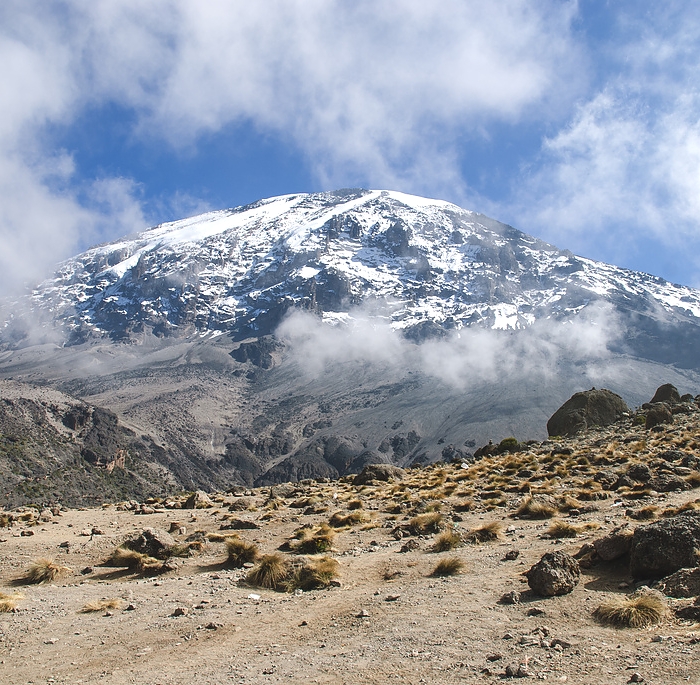Mountain Kilimanjaro
Overview
Mountain Kilimanjaro is the highest peak on the African continent, it is also the tallest free-standing mountain in the world, rising in breathtaking isolation from the surrounding coastal scrubland-elevation around 900 meters to an imperious 5,895 meters (19,336 feet) one of the world's most accessible high summits beacon for visitors from around the world. Most climbers reach the crater rim with little more than a walking stick, proper clothing and determination. Those who reach Uhuru Peak or Gillman's Point on the lip of the crater will have earned their climbing certificates.
The Kilimanjaro National Park
Located northern Tanzania near the town of moshi, comprises the area of 755 sq km (292 sq miles) above the 2700 m contours. It includes the moorland and highland Zones, Shira Plateau, Kibo and Mawenzi Peaks. In addition, the park has six (6) corridors or rights of way through the Kilimanjaro forest Reserve, the forest reserve, which is also a Game Reserve. The forest in Kilimanjaro is the home of most of wild animals. However they are usually very sly and quite.
They hide themselves and they are also hidden from your view by the thickness of trees and undergrowth or by mist and cloud. You are quite like to see a large number of elephant, Tree hyrax, Greater galogo bush or common duiker, endangered Abbots' duiker suni, bushbuck, klipspringer, and eland. Also you may hear some monkeys like blue monkeys and blank and white colobus and Oliver baboons, buffalo, lion even leopards can occasionally be seen.
The park is famous for variety of birds like a large hawk such as lammergeyer, crowned eagle ,Augur buzzard and white-necked varen, also common bulbul, white-browed robin, chat tropical boubou, speckled mouse bird, brouze sunbird, silvery-checked, hornbill-black and white harcaub's turaco, streaky seed eater, and Alpine or hill chat. A long the trail the large and most spectacular ones are swallowtails, papilionrex-black, creamed orange, whilst Papillion hormimanii is black and turquoise. Charaxes species are often seen feeding on animal's dung.
Above 4000 m, a surreal alpine desert supports little life other than a few hardy mosses and lichen. Then, finally, the last vestigial vegetation gives way to a winter wonderland of ice and snow-and the magnificent beauty of the roof of the continent
Highlights
Let's look at the individual Kilimanjaro climbing routes and who they are suitable for:
- The Marangu Route: the only Kilimanjaro climb route that offers hut accommodation.
- The Machame Route: the most popular climbing route up Kilimanjaro.
- The Rongai Route: the easiest route on Kilimanjaro.
- The Shira Route: this one catapults you to some serious altitude on the first day.
- The Lemosho Route: hands down the most beautiful Kilimanjaro climb route, but expensive.
- The Umbwe Route: the most difficult and demanding route on Kilimanjaro, and the most spectacular.





















